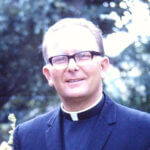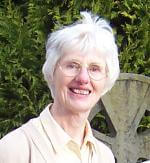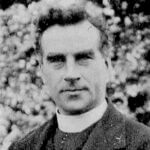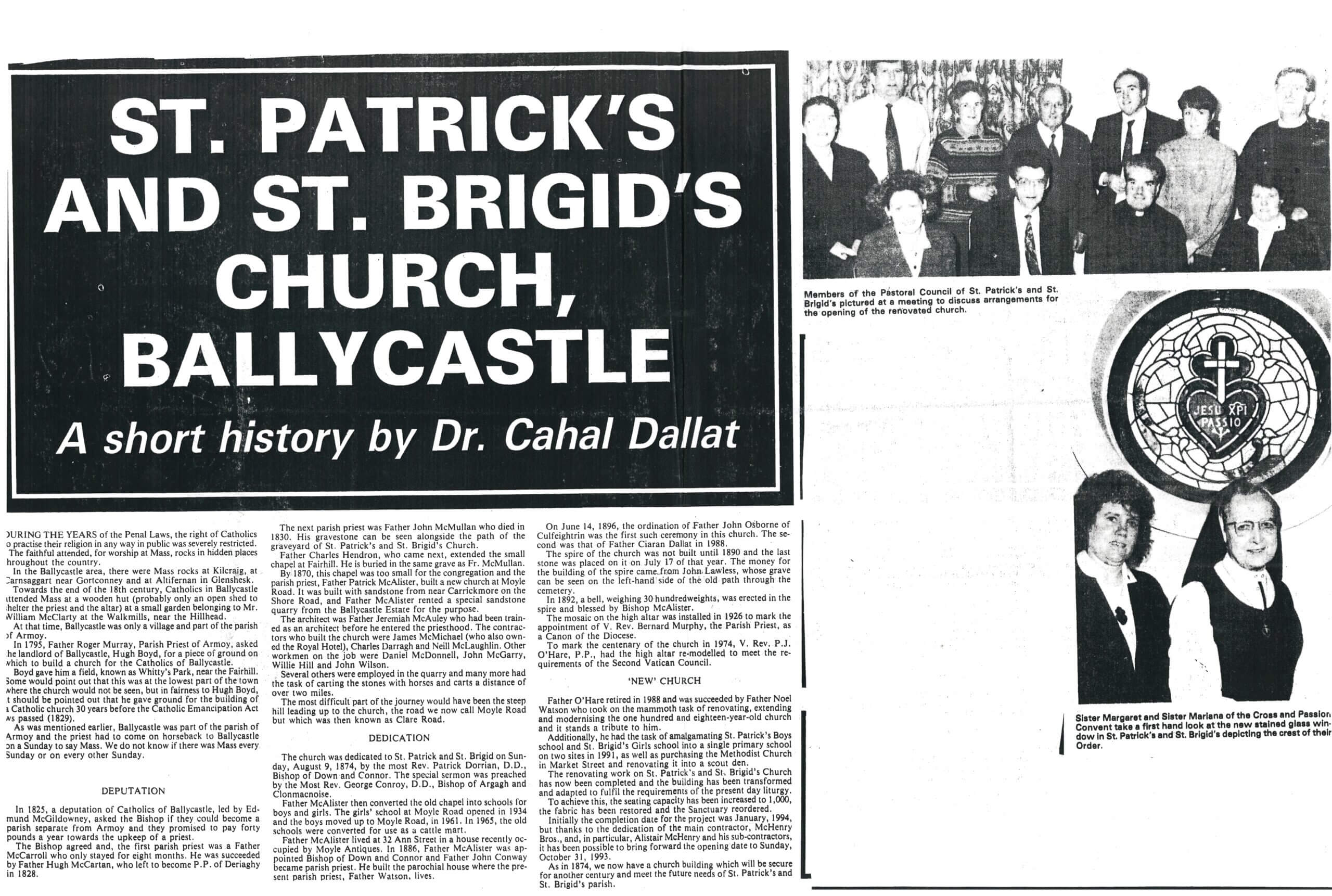Religion
Like any other part of Ireland, religion has played an important part in the life of the Glen, and left its mark, from ancient crosses, Mass Rocks, Bonamargy Friary at the foot of the Glen, Culfeightrin Church further up the Glen, Ardagh Friary at the top of the Glen, and more recently the Church of the Immaculate Conception. Religion continues to be a large part of life in the Glen today.
Tullaghore Crosses
The Tullaghore Crosses, of which there are two, and are thought to be early Christian. One is a simple cross about a metre in height, currently lying flat under a whin bush. The farmer moved one that had fallen over over, to a safer place nearby. The other cross appears to have a carving on it shaped like a pair of shears or a hairpin.
Both Ulster University and Queen’s University have examined the site in recent decades and the thinking is that the crosses possibly were moved here from another religious site. However, the placing of the two crosses here, suggests that this site too is important. These ancient crosses are located in Armoy Glen leading into Glenshesk.
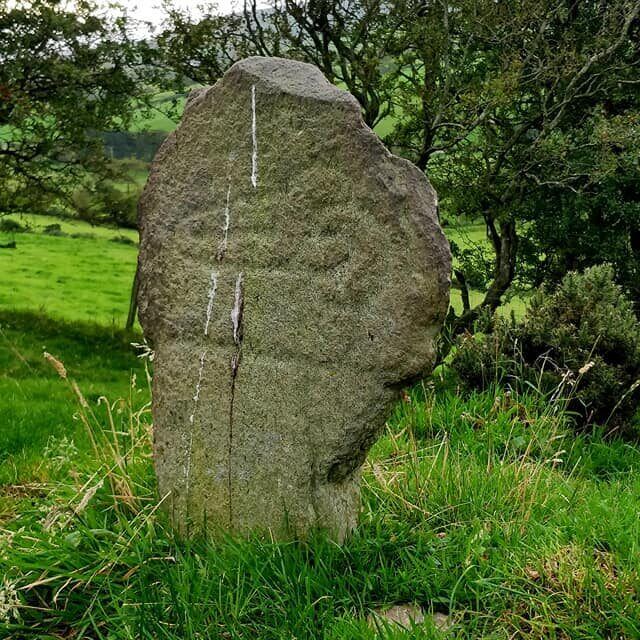
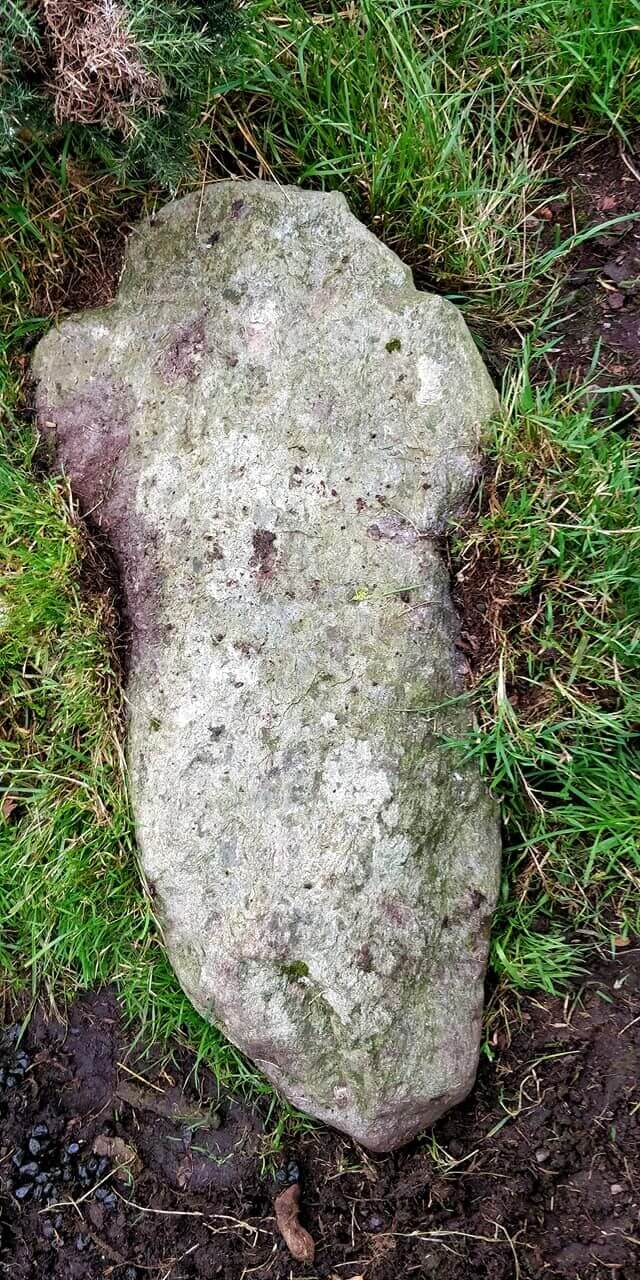
Bonamargy:
The name Bonamargy comes from the Irish Bun na Mairge which means “the foot of the Margey”, the river (flowing from the Glenshesk River) beside which the friary was built by the Franciscan order around 1500. The work of the monks was mainly to support the local clergy with pastoral work and education. The friary buildings were often simple in design, but the Bunmargy ruins are impressive, and are one of the best preserved set of friary ruins in Ireland, and undoubtedly set in one of the lost beautiful setting with Glenshesk above it, and Ballycastle bay and Rathlin Island below it.
Bonamargy continued to function after the Dissolution of the Monasteries in 1536. It came into the possession of the MacDonnells of Antrim in 1558 following Sorley Boy MacDonnell’s victory over the McQuillans. In 1584 the church, which had a thatched roof, was burnt in an attack by Scottish members of the MacDonnells clan on English troops stationed here, and the friary was abandoned for some years. By the 1620’s, however, it was repaired, and the Franciscans used it as a base for missionary work to promote the Catholic faith in Scotland. During this period, Bonamargy almost certainly functioned as the local parish church as well, continuing as a place of worship until at least the 1720’s and possibly as late as the 1770’s, when the west gable collapsed in a storm. The graveyard however continued to be used for burials until modern times. If you walk about the present ruins, you will see several Glenshesk families buried there including The McCaughan’s from Duncarbit, Browns from Broughmore, and the McMullans from Tavnaghboy. There are probably several other Glenshesk families buried there, but many of the headstones are not able to be read as they are in a poor state due to their age.
One of the most famous inhabitants of Bonamargy was Julia McQuillan, who was known as the “Black Nun”. She was a recluse and prophetess. She is said to have been murdered when an arrow hit her through a small window on the 7th step of the stairs to the first floor, and legend has it that if you stand on this step, on certain times of the year, you would hear her blood drip! . As schoolchildren, we used to dare each other to stand on this step; sadly, in recent times due to no doubt Health and Safety issues, the stairs are now inaccessible.
Julia asked that when she died, that as further penance, she wanted to be buried at the west doorway, so that people would have to walk on her grave. Her unusual gravestone, a disc-headed stone cross, can still be seen today. As mentioned, she told a number of prophecies which have since come true, but there is a theory that some of these were attributed to her after the event. One prophecy talks of a red-headed priest drowning in the Devil’s Church near the Pans Rock in Ballycastle, and indeed a local red-headed priest, Fr James McCann did drown there, having earlier that morning served mass in Glenshesk. Another was that Knocklayde would be spread across North Antrim, which many took, foretold of a volcanic eruption, however lime was quarried from the side of Knocklayde and was spread across North Antrim on fields after they were ploughed! Yet another prediction was of a horseless carriage flying over a forest in the Glens, which could be the building of railway bridges in the Glens! Click the button below for a Drone Video of Bonamargy
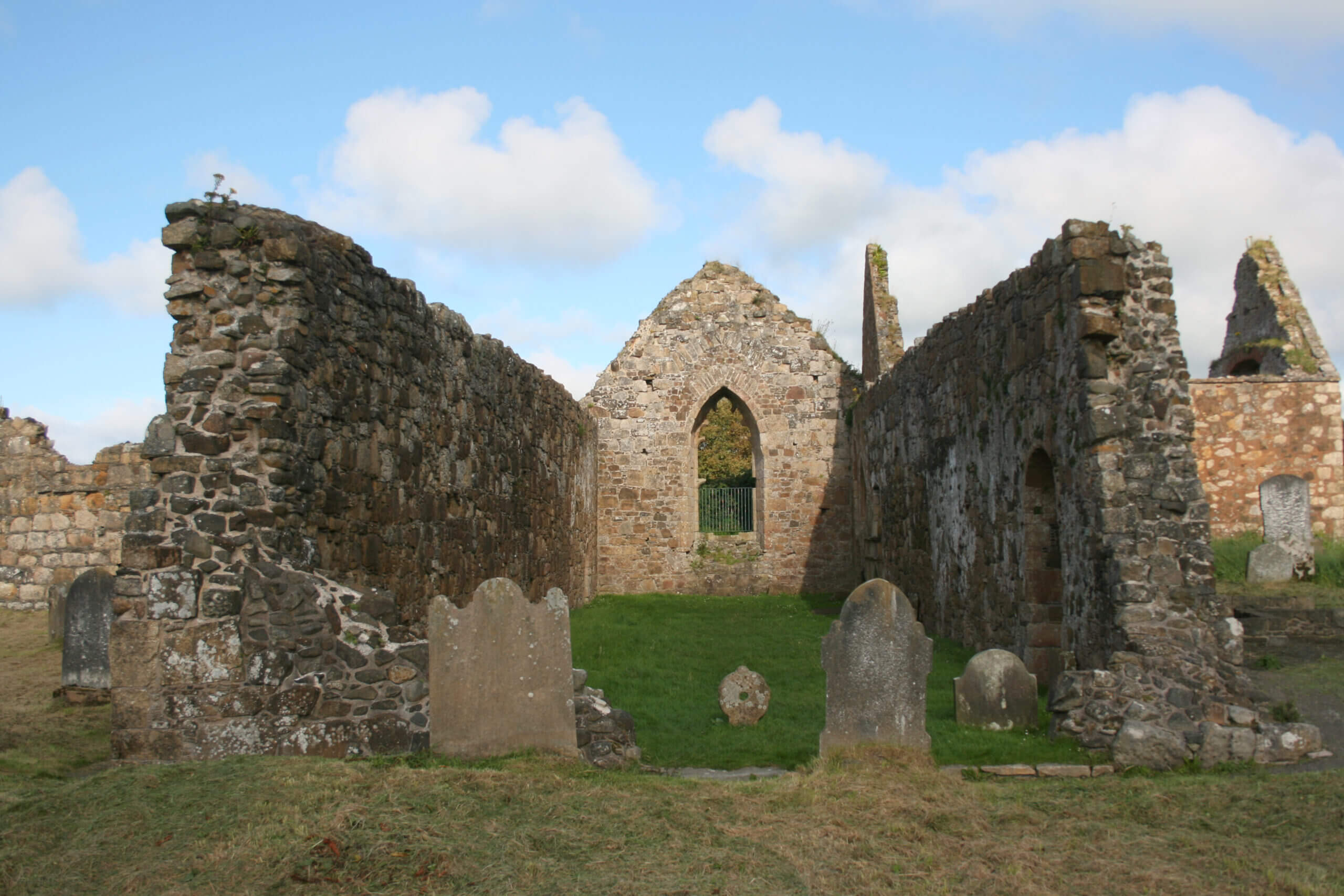
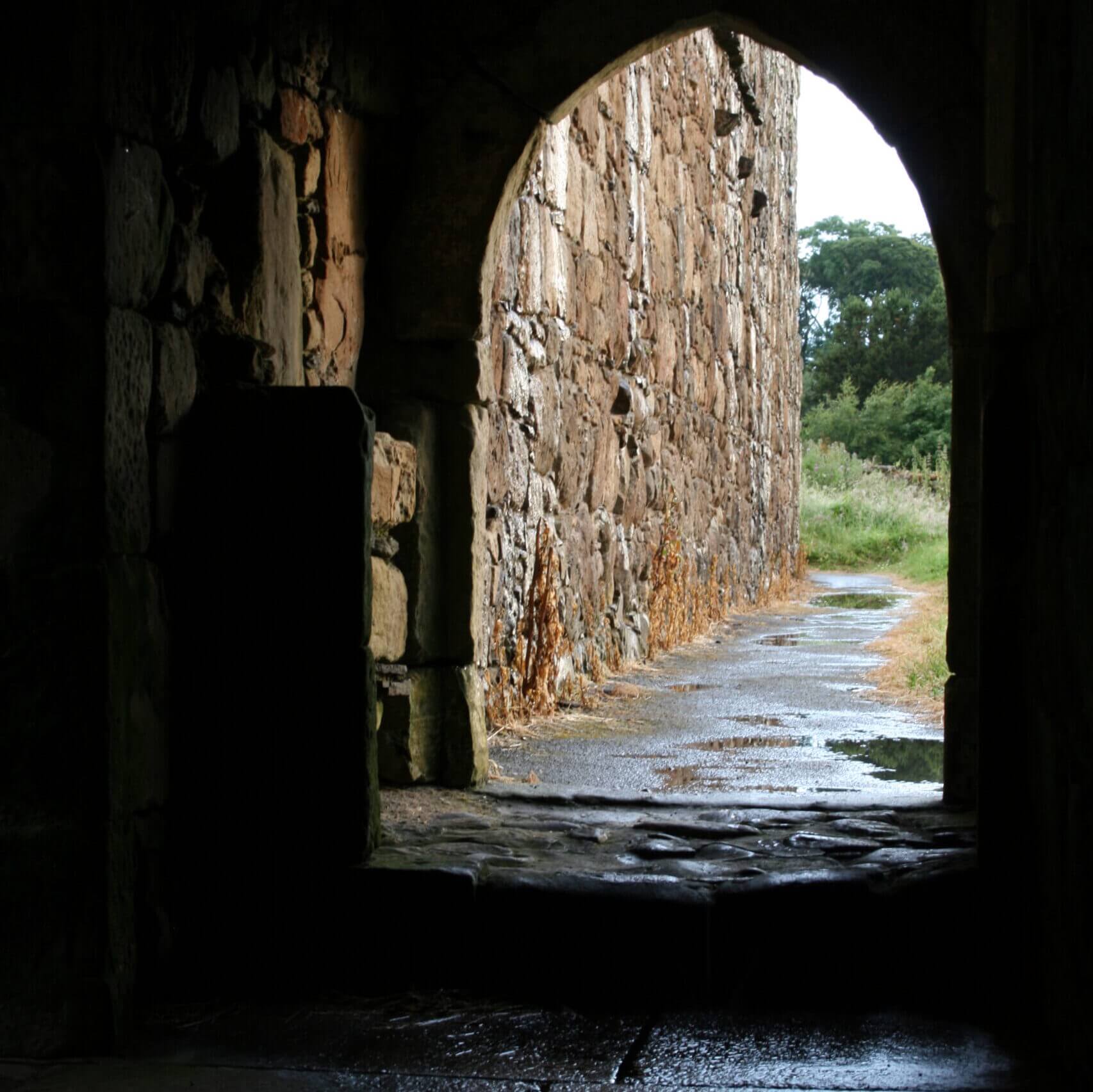

Ardagh:
When the Franciscans were forced to leave Bunamargy Friary after it was burned in 1584 , they relocated from one end of Glenshesk to Ardagh at the other end . During Penal times of persecution some of the Catholics of Ramoan attended the celebration of Mass at this Friary in Ardagh.
Part of the Mass rock from Ardagh was incorporated into Cross and Passion College’s Chapel altar, and when this building was demolished, it is believed that the relic was relocated to the altar in Culfeightrin Church, Carey. All altars in Catholic Churches contain a relic. In the interesting B&W photograph taken nearly 100 years ago by Fr John McCaughan is described as the Friar’s font at Ardagh, Glenshesk, but it is known presently at the Ardagh Mass Rock
M’Cahans Local Histories states: “Close to the west bank of the river, was formerly an ancient building, of which there is now no trace, known as the Friar’s House, and a short distance beyond Ardagh on the right side of the road is the Friar’s Well. Then on the hillside is a large stone with a small circular front about 7.5″ deep and 10″ in diameter cut therein.”
“This is one of the most secluded spots in Ireland. There is a flat hole in a loop of the Shesk river, but no remains of the buildings which was once the Friars’ house. There were some remains in O’Laverty’s time, a flower, fruit garden and fishpond. Nearby is Tobar na mBrathair, literally the Friars’ Well. There is an altar stone in the Cross and Passion Convent in Ballycastle, inscribed “Frater Bonaventura Boylan ordinig Sancti Francisci me fieri fecit, Anno Domini 1725″. This had previously been used in the Parish church of Ballycastle and before that, in Armoy”. (The Franciscans in Co Antrim, Patrick J.McKavanagh, PP of Armoy, from Glens of Antrim Historical Society lecture, 25th March 1977)
In the “Diocese of Down and Connor Ancient” and Modern by Rev. J. O’Laverty P.P.M.R.I.A (published 1887) it states: “On the banks of the Shesk in the farm of Thomas Casley, in Ardagh, are the ruins of an ancient building called “the Friars’ House”. It seems to have been 40 feet by 20 in the inside; what remains of it now are portions of the sidewalls 40 feet in length, 3 feet in breadth and from 1 to 2 feet in height built of stone and lime. A number of ancient cherry trees still bear fruit, and some fertile spots along the Shesk are said to have been the flower and fruit gardens of the friars, and are now called “the Vineyard.” Adjoining it was an ancient fishpond. It was here the Franciscan friars established their “Locus Refugii,” when expelled from Carrickfergus and Bunnamargy. A list of “suspected men in Ulster ” in the reign of Charles II. is preserved among the Carte Papers, Bodleian Library, vol. xxxiv, p.290, and among these suspected are “Hugh O’Dornan, chief of the friars of Glenwalch (a mistake for Glenshesk) in ye Barony of Carry, and ye rest of ye friars there.” Primate Oliver Plunket in his report on the state of religion in Down and Connor in 1671, says- “In the Convent of Carrickfergus, in the diocese of Connor, there are ten Franciscans of whom only five are priests. Amongst these Hugh O’Dornan and Daniel O’Mellan are distinguished in preaching. There is a certain Paul O’Haran who is well versed in literature.” Hugh O’Dornan was elected Guardian of the Franciscan Convent of Carrickfergus in 1645 and held the office until February 4th, 1648. He held the same office from Sept. 8th, 1661, until October 18th, 1669, and he was again elected to it, August 23rd, 1675, and held it until March 14th, 1681. We may therefore presume that the “Friars’ House,” in Glenshesk, was erected shortly after the Act of Explanation which reinstated the Marquis of Antrim in his estates. About a quarter of a mile, south-west of the “Friars’ House,” are the “Friars’ Wells,” or Tobar-na-mbrahar, three springs in a line of twelve yards along a “bridle” road at the base of a lofty hill. About a quarter of a mile west of the Friars’ House is a stone 5 feet long, 3 feet broad, and 1 foot 8 inches thick, having a circular basin 10 inches in diameter and 7 1/2 inches in depth, hollowed in it. This stone is raised about 1 1/2 feet above the ground by several stones placed under its ends. It is seated on a rocky eminence in the farm of John McCaula close to the village of Ardagh. On the east side of it 4 1/2 feet square was enclosed by rows of stones sunk on their ends. Close to it on the north-east side are traces of ancient houses and small enclosures, 5 1/2 feet square on the inside, bounded by flat stones fixed on their ends and rising from 1 to 4 feet above the surface”
“Friars’ House: In Ardagh and holding of Thomas Casley, and situated on the banks of the River Shesk, there stands the ruins of an ancient building locally called the Friars’ House and said to have been formally the seat of a number of friars. The building seems to have stood 40 by 20 feet inside and situated east and west. The only portion of it now to be seen is the remains of one of the side walls, which is of stone and lime and measures 40 feet in length, 3 feet in breath, whether a dwelling or an edifice, was well adapted for religious orders. Here are also extant a number of ancient cherry bushes at present bearing fruit. Contiguous and bordering the river are some fertile valleys said to have been the friars’ fruit and flower gardens, and are still called the Vine-yard. Adjoining these stood an ancient fish-pond, but the whole now disfigured and the site under grazing and tillage.
Friars’ Well: About 2 forlongs south west of the above ruins stands at the base of a lofty hill 3 ancient springs locally called the Friars’ Wells. They are situated in a line of 12 yards distance, on the site of a bridle road near to the village of Ardagh. The waters of these springs is considered of a good quality, though it sometimes happens 1 or perhaps 2 of them will dry up for some weeks, while the other run profusely; but the 3 most frequently run together. They are said to be the springs that accommodated the aforesaid seat of friars and have been consequently dedicated to them by name. Informants Pat and John McCormick and others
Altar and Font: About 2 furlongs west of the Friars’ House stands an ancient altar.The draft beneath (drawing) represent a north view of an ancient altar situate about 2 furlongs west of the Friars’ House in the townland of Ardagh, and stands in the holding of John McCawla on a rocky eminence contiguous to the village of Ardagh. It is a stone of a large size, supported by a building of other stones placed under either end. In the south end of it is a circular font 10 inches in diameter and 7 and a half inches depth. It was much larger till destroyed by a fire placed over it some years back. The stone or altar is 5 feet long, 3 feet broad and 1 foot 8 inches thick, and situated nearly north south. 4 and a half feet square on the east side, and adjoining the altar, was enclosed by a row of stones sunk on their ends in the ground.
Continuous to it on the north side stands the traces of ancient houses and other small enclosures resembling graves, and one of which stands 5 and a half by 5 and a half feet inside and enclosed by flat stones sunk in the ground. These stones vary from 1 to 6 and a half feet in length and stand from 1 to 4 feet above the surface.
Whether this place was originally of druidical construction or not, it would seem from its vicinity to the Friars’ House, together with the font now visible in the altar stone, that it has been latterly occupied as a place of Chriostian worship, perhaps connected with the aresaid friary. Informants Pat McCormick, Thomas Casley and others. 10th September 1838.”
(Source: OS Memoirs of Ireland, Parishes of Co Antrim, 1830-1832, 1835, 1838-1839)


Culfeightrin Church:
Culfeightrin Church ruins is in the townland of Churchfield, and can be seen from the main Glenshesk Road as you head up the Glen from Ballycastle. The word “Churchfield” is a translation of it’s old Irish name “Magherintemple”.
The existing ruin is probably the second or third church on the original site. The original church was founded about the year AD 450 by St. Patrick. The tripartite life of St. Patrick mentions that he erected in Cathrigia (Carey) “the Church of Cuil Echtrann (Culfeightrin) over which he appointed Fiachrius as Bishop.” The east window of the ruins bears so close a resemblance to the east window of the ruined friary church of Bunamargy as to suggest that both windows or buildings belong to the same period, i.e. between the years 1450-1500. Information courtesy of “from Glynn to Glen”.
Finally, it’s worth noting that the Church of the Immaculate Conception was formerly part of Culfeightrin Parish; now that would have been a great parish hurling team!
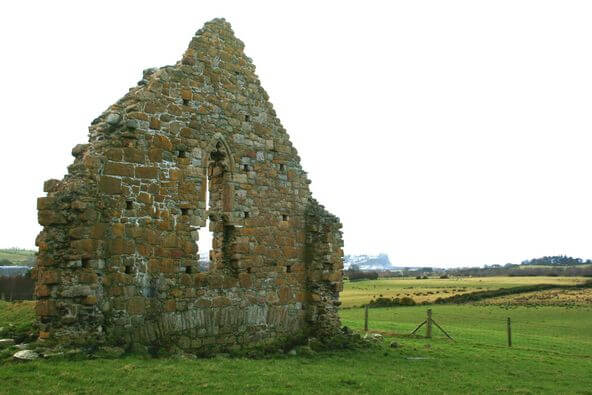
Mass Rocks
During Penal times the celebration of mass was forbidden resulting in mass being said in remote locations around the Glens, of which there are many. Large rocks were erected (or used as they sat in situ) called “Mass Rocks” and used as an altar to say mass. Mass sites did not necessarily need a large rock, as some sites were just in a corner of a remote or out of the way field or valley. As Frank Rogers pointed out, Penal times in Ulster could be said to have started after the Plantation at the beginning of the 17th Century and continued well into the 18th Century.
One of the largest Mass Rocks still to be seen in this region is the one at Ardagh (“high field”) in Glenshesk, which is of course also the same site where the monks retreated to, after they were expelled from Bonamargy and Carrickfergus. In relation to the Mass Rock, this can still be seen here. During Penal times not only did Glenshesk locals visit this site for mass, but also many Catholics travelled up from Ballycastle, as Bonamargy would previously have been attended by Ballycastle folk up until this point. Although the Ardagh mass rock site may seem exposed today, at one time this area may have been forested as much of the glen was then; it is a short walk from here to the friary site. A short distance away at Lyden’s farm, which is now derelict, the late Joe Lyden had informed Danny Morgan that there was a small recess in the ground known as the “Priest’s Bed”, presently located near an old caravan. This is perhaps where maybe the priest hid if this general location was under immediate threat of being searched for priests during penal times.
Mass may have been said at this rock after the friary was vacated, but as it was probably already widely known as a site of Catholic worship, the local mass-going community may have soon sought out a less conspicuous site like Altiffirnan, which is in the same glen. This theory is supported by John Clarke; in his publication “St Brigid’s Abbey” (1926) he writes “when Ardagh, the little Friary at the head of Glenshesk was no longer safe for wandering Friar and holy priest, other spots had to be chosen in secluded places, on the slopes of Knocklayde”. This mass rock has a small hollow in it, and it is interesting that it appears in Fr John McCaughan’s 1918 photograph labelled the “Friar’s font”.
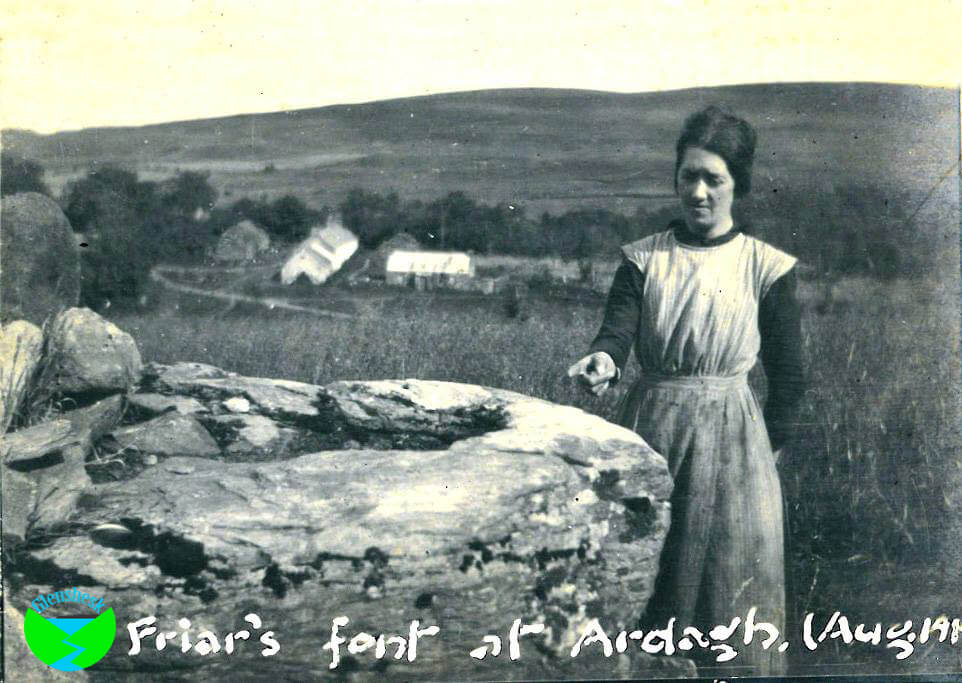

Another Penal Mass site, or “Station” as Rev J O’Laverty calls it, is recorded in a field in the townland of Duncarbit (“Fort of the Chariot”). Recently on a farm walk in the Bailey farm, a small stone located near the Duncarbit Standing stones at Slaught was highlighted. It is interesting to note that this stone, which is 2 feet in height, has a flat top with a cross incised on it; I wonder could this be a Mass Rock that O’Laverty mentions, or more likely, was this some sort of grave on which decoration was added at a later time?


However, could O’Laverty be referring to a different site at Altiffirnan , a short distance away in the neighbouring townland of Drumacullin. Altiffirnan is a very secluded valley and would seem an ideal place for people to meet out of sight. There are several large stones around this site, but the one pictured is located in a flat area that could be a meeting place, and has a large flat top; although it is lying at a slight angle it is the best candidate.
At the top of the Glen on the edge of Ballycastle, Cathal Dallat and O’Laverty also reference mass being said in Penal times at Kilcreg – (Cill Chreige – “Burial ground on the rocky hill”), near the Salthouse Hotel. The late Frank Rogers visited this site and was convinced that the rock photographed (below) was indeed the Kilcreg Mass Rock. Having visited this site myself, it seems entirely plausible. Until recent years this site was completely overgrown, and it was Norman Hill who when clearing the site, discovered the rock and came to the same conclusion; it’s been marvellous to rediscover this important site which has now been found and recorded for future generations.


The Church of the Immaculate Conception
The Church of the Immaculate Conception, or locally known as “Glenshesk Chapel”, was built in 1827 by Fr Hugh McCartan in the townland of Corvally; the Church remained in an unfinished state until 1863! The land, an acre, was donated by the Landlord’s widow Mrs Cuppagh (Glenbank), who also paid for planting trees and landscaping the area. This chapel predated Catholic emancipation by two years.
“The Roman Catholic chapel in Corvally townland up the Glenshesk river is rather a recent erection. It is tolerably well built but wholly unfinished internally. It is 40ft long by 20ft wide and would accommodate about 200 persons”. (Ordnance Survey Memoir for the Parish of Ramoan, Co Antrim by James Boyle, 1835)
In the 1920s the church was refurbished and the local Glen’s folk were asked as part of the fundraising, to purchase a pew. As there are only a handful of families in the Glen, each family ended up buying and then using their pew. Over decades the same families used the same seats in the same pews. Anyone from the Glen who attended mass there could show you where they sat over the time that they lived and attended mass there. Of course families change, but until this very day, families sit in the exact same seats for each service, but they never mind if visitors come in and take their seats. Unusually too, because of the small congregation, the families tending services there, have parked in the same spot in the church car park too, over the decades.
Around the 1900’s 3 pews and a confessional were removed from the back of the Church to aid the building of the Gallery above, and one family, the McAuley’s, moved up to the Gallery back then.
Visitors today are often struck that at the end of mass there is no rushing to cars to get home, but instead people meet outside in groups to chat, as it’s one of the few times when locals come together. The Church is part of Ballycastle Parish which includes the main Church in Ballycastle (St Patrick’s & St Brigid’s) and Rathlin Island (St Mary’s). More information about the parish can be found at https://www.ballycastleparish.com/
Attached is a nice collection of photographs including one taken by Fr John McCaughan in 1922. The tree in the foreground was also the location where a key was to be found, if a pilgrim wanted to visit the chapel but found it locked!
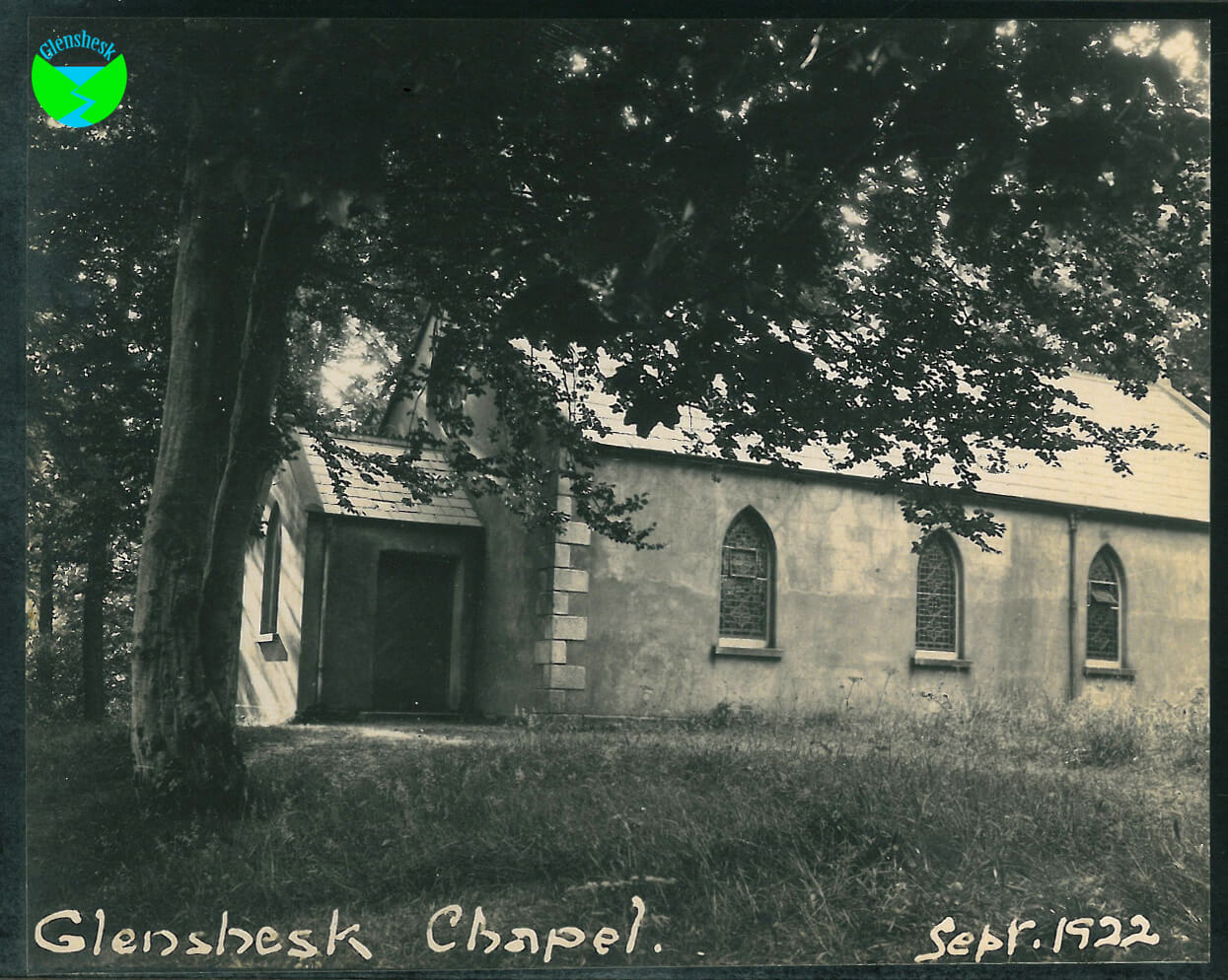


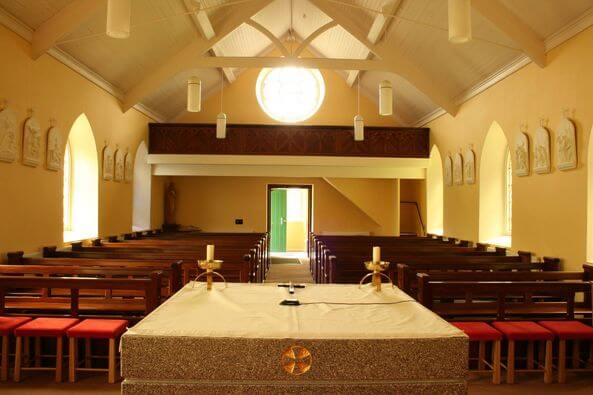
Our Lady of Lourdes Stained Glass Window:
The 11th February, is the feast of Our Lady of Lourdes and World Day of the Sick. This window from the Church of the Immaculate Conception, Glenshesk, depicts one of the various apparitions of Our Lady to the 14 year-old peasant girl Bernadette Soubirous, which took place in Lourdes between 11th February and 16th July in 1858. During the apparition on 25th March Mary announced to Bernadette “I am the Immaculate Conception”, and this is the dedication of this little country church.
To mark the centenary of the apparitions the window was installed in 1958 during renovations to the church, and bears the inscription;
+ Pray for Canon McKinley P.P., V.F., Ramoan 1958 +
Canon Archibald McKinley, an uncle of the late Kathleen McCaughan of The Hollow, was born in Glenmakeeran, Culfeightrin. He was the Parish Priest of Ramoan Parish (Ballycastle) from 1944 until his death in 1959.
The parish curate, Fr John McMahon, was the driving force behind the renovations and responsible for raising funds for the project. As well as the usual tried and trusted fundraising activities that were popular in all parishes at the time, such as Whist Drives, Guest Teas and raffles, Fr McMahon got the Glenshesk people involved in more innovative methods. A flock of Blackface sheep were bought in Donegal, and seven or so ewes were given to each farmer to look after with the proceeds from the sale of their lambs each year given back to the parish. A farm which had no sheep, only cattle, was given a young bullock to fatten. The Glenshesk parishioners were also asked to contribute a weekly subscription of one shilling to the renovation fund, and those who were smokers were told that this could easily be raised by smoking one less cigarette each day.
Because of the success of the fundraising the original modest plans for the renovations were revised and became more ambitious. The final work included a new floor being laid, the choir gallery completely restructured, new mahogany pews installed, a window in the sanctuary wall above the altar bricked up and replaced with a large crucifix, the footpath from the lower road repaired and the main car park gates rehung.
This stained glass window was originally situated in the sanctuary area, but during the more recent church renovations in 2003 it was moved down to its present position at the back of the church where it can be more easily seen by the parishioners.

May Procession
At this time of the year in the 1970’s up until the 1990’s, the Glen Procession took place at the end of May each year. The service included prayers in the Chapel, followed by four local men carrying the statue of the Virgin Mary around the car park to the decorated arch, a few more papers and a rosary, and then back into the church for final prayers. The procession often included children who had just made their First Communion from across the parish and further afield. The arch was covered in wild bluebells picked that morning in the Glen, purple rhododendron from along the main Glenshesk Road, and a few additional flowers. The service was peppered with hymns provided by the Glen Choir which was mainly made up of girls/women of the parish and Mr Burns.
Nearly the entire parish came to the event and as is tradition, the service provided a time for locals to come together not only in prayer, but to meet socially afterwards for a chat; something that still continues to this very day. How many Glens folk do you recognise in these photos taken in the 1970’s courtesy of Anne McCaughan
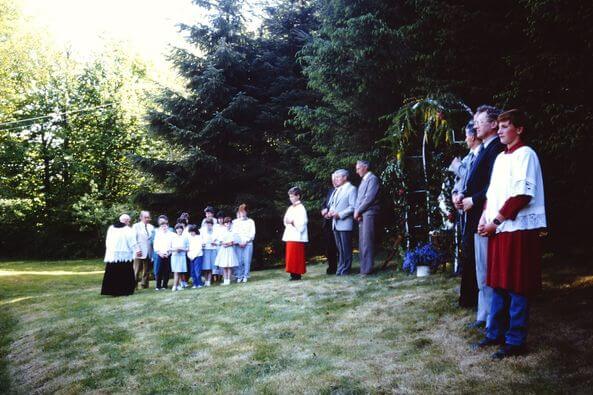

Decoration the Arch for the May Procession
Here is a lovely photograph of three well-known, but sadly missed Glenshesk men, Brian McCaughan and his father Kevin of Duncarbit, and Brendan Devlin of Glenbank. They are decorating the arch in the chapel grounds just before the annual May Procession which used to take place around the third Sunday in May.
The arch was decorated with wild bluebells from along the Glenshesk River/Duncarbit mountain, as well as wild Rhododendron from along the main Glenshesk Road at Glenbank, branches from nearby pine trees, finally supplemented with a few additional bought flowers. A real team effort!

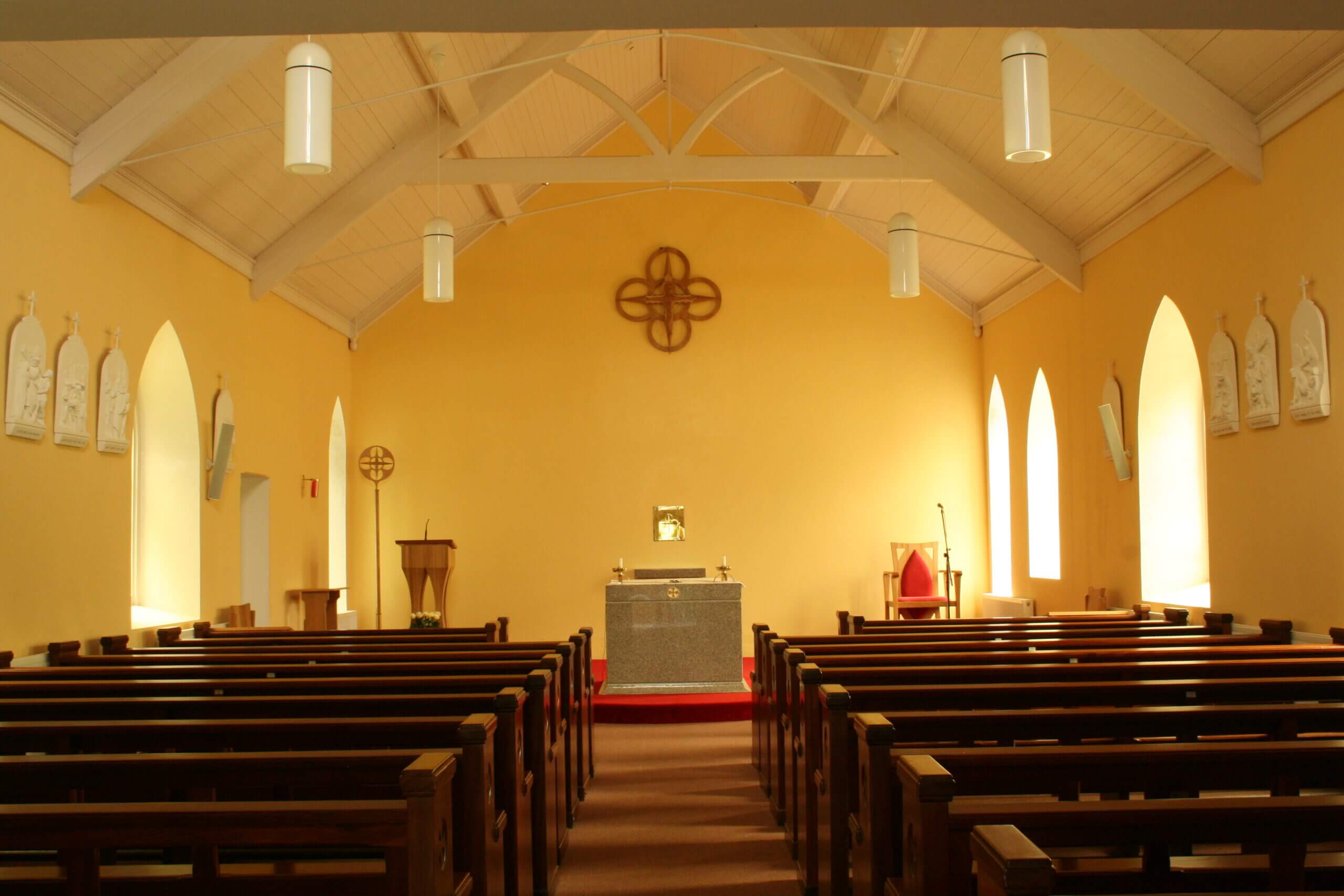
The Church Today:
In 2003 the Church was completely renovated and on Sunday 7th December of that year it was officially reopened. Outside of Covid lockdowns (as we write this), mass is at 9am each Sunday morning.
For more photos, Click bottom of page!
Clergy from Glenshesk
Glenshesk has produced many priests and nuns over the years, who have served in parishes here and abroad. It would have been common in the past that some Irish families had the tradition of at least one priest/nun in every generation, and this was the case for the McCaughans in Duncarbit who in the last three generations, have had a priest in each, including presently, Fr Aidan McCaughan.
Mgr Colm McCaughan (1927-2016): Mgr Colm McCaughan was born 12th November 1927, Duncarbit House, Glenshesk. He attended secondary school in St. Malachy’s College Belfast and went on to attend Queen’s University Belfast completing a BA. Following his studies in Belfast, he attended St Patrick’s College, Maynooth in the Republic of Ireland and was ordained to the priesthood on the 20th June 1954. Colm was Appointed Reader in Bangor 1954, and then Diocesan Ecclesiastical Inspector 1957.
From 1968 to 1987 he was appointed Down and Connor Maintained Schools Secretary to the Diocesan Education Committee. In 1987 he was then selected by the Northern Bishops as Director of the New Council for Catholic Maintained Schools (CCMS) until 1993. He was then appointed as Chancellor of the Diocese of Down and Connor in August 1993, a post he held until his retirement in September 2009, and continued from then in his role as senior advisor to the Bishop until his death. In 1998 he was made a Monsignor. Fr Colm is fondly remembered by the glen’s people particularly at Christmas, as from 1957, he has said all but two of the midnight Christmas Masses in the Glenshesk Chapel.
Outside of his work, Fr Colm was known for his hobby of repairing clocks and watches, and he always seemed to have a number of repairs on the go, at any one time. He also was a keen golfer and had an interest in local history. He died 21st December 2016, and is buried in Ballycastle.
Fr Donal Kelly – 1928 – 2017): Fr Donal’s mother, Annie McCollam, was born in Greenans, Glenshesk. Her family then moved to Loughguile but she later returned to teach in Glenshesk National School around 1920.Her Principal (and the only other teacher) was William Kelly, originally from Co. Fermanagh, whom she later married. Mrs Kelly continued to teach the Juniors and Master Kelly the Seniors. Though the family lived in Leyland, Ballycastle, Donal accompanied his parents to school in Glenshesk where they were taught.Coincidentally his lifelong friend, the late Monsignor Colm McCaughan, who died only eight weeks apart, started the Glen School on the same day. Both progressed together from Glenshesk NS to St Malachy’s College in Belfast, Queen’s University, and St Patrick’s College Maynooth, where both were ordained as priests on 20th June 1954.Both Donal and Colm were appointed as Ecclesiastical Inspectors for Schools in Down and Connor Diocese. In 1974 Donal was appointed to lecture in Religious Studies in St Joseph’s College of Education, Belfast, and then in 1984 as curate in Kilkeel. He was appointed as Parish Priest first to Saintfield in 1986 and then to Dundrum in 1995. Sadly due to failing health he retired in 1999, moving to Dublin to be near his family.
Fr John McCaughan (1881-1939): Fr John McCaughan from Duncarbit House, Glenshesk, was born 26th June 1881. He entered St Malachy’s College 1896, was Ordained 17th June 1906 in Maynooth by Dr. Walsh. He taught in St Malachy’s from September 1906 and was appointed President, 19th March 1924 – 1931. On 1st October 1931 he was made Parish Priest and V.F. (Vicar Forane) of St Paul’s Parish, Falls Road. A Vicar Forane is responsible for the priests in a group of parishes.
Outside of his priestly duties, Fr John was a regular visitor to Glenshesk and was a keen photographer. From 1918 until the late 1920’s he took a considerable amount of photographs in and around Glenshesk and further afield. His stunning detailed photographs capture everyday life in the Glens, and it is hoped that in the near future, some of these historically important unique photographs will be made available to the wider public. A small sample of his photographs are in the “Galleries” section of this website. Fr John died on 27th June 1939, and is buried at Milltown Cemetery, Belfast
Sr Brid McCaughan: A commitment to life in the holy orders, took the young Brid from her home at The Hollow, Glenshesk at the tender age of 17. She joined the Sisters of Cross and Passion in Bolton, in September 1958, making her first Profession in 1961 and her Final in April 1964, by which time she had also qualified as a teacher.
Her work as a Sister of the Community took her to Dublin, Botswana, Larne, Swansea, Scotland and finally Manchester, realising some 65 years of devotion to her Religious Profession. Despite spending the vast majority of her 77 years outside Northern Ireland, she loved coming home to the Glen, and always appreciated the prayers and support of her native community.
Sister Annie May McCaughan (1891-1973): Sr Annie May was from Duncarbit was a Sister of Notre Dame
Sister May McDonnell: Sr May born and brought up in Aghaleck, Glenshesk and was a Cross & Passion Sister
Fr John Stewart of Killyleagh’s mother was a Lydon from Ardagh, Glenshesk


